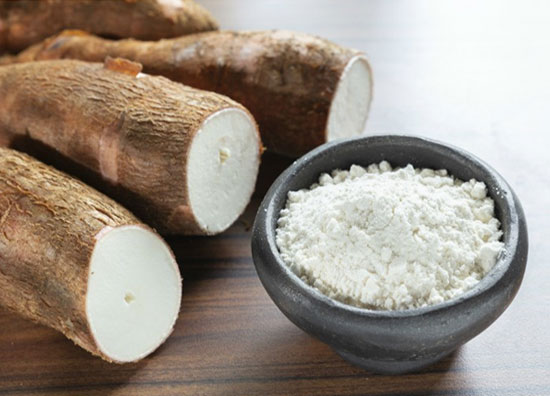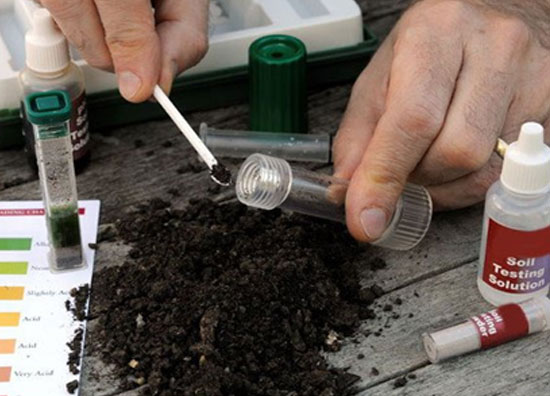CASSAVA STARCH MILL

Cassava Starch Production
Starch is one of the most abundant substances in nature, a renewable and almost unlimited resource. Starch is produced from grain or root crops. It is mainly used as food, but is also readily converted chemically, physically, and biologically into many useful products to date, Starch is used to produce such diverse products as food, paper, textiles, adhesives, beverages, confectionery, pharmaceuticals, and building materials. Cassava starch has many remarkable characteristics, including high paste viscosity, high paste clarity, and high freeze-thaw stability, which are advantageous to many industries .
Cassava starch is produced primarily by the wet milling of fresh cassava roots but in some countries such as Thailand it is produced from dry cassava chips. Starch is the main constituent of cassava. About 25% starch may be obtained from mature, good quality tubers. About 60 % starch may be obtained from dry cassava chips and about 10 % dry pulp may be obtained per 100 kg of cassava roots.
Fresh tubers are processed during season and dry chips during the off-season in some countries. Extraction of starch from fresh cassava roots (Fig. 1) can be divided into five main stages: preparation (peeling and washing), rasping/pulping/grating, purification (starch washing), dewatering and drying, and finishing (milling and packaging).
For cassava, the process of starch extraction is relatively simple as there are only small amounts of secondary substances, such as protein, in the roots. When cassava roots are harvested or selected for starch extraction, age and root quality are critical factors. Cassava roots need to be processed almost immediately after harvest, as the roots are highly perishable and enzymatic processes accelerate deterioration within 1-2 days. A first-rate quality starch can be obtained from cassava using only water, and this makes the processing of cassava starch and flour particularly suitable for developing countries and rural industries.
Advantages of cassava starch
Cassava has many advantages for starch production.
High level of purity.
Excellent thickening characteristics.
A neutral (bland) taste.
Desirable textural characteristics.
A relatively cheap source of raw material containing a high concentration of starch (dry-matter basis) that can equal or surpass the properties offered by other starches (maize, wheat, sweetpotato, and rice).
Cassava starch:
is easy to extract using a simple process (when compared to other starches) that can be carried out on a small-scale with limited capital.is often preferred in adhesive production as the adhesives are more viscous, work more smoothly, and provide stable glues of neutral pH has clear paste.
The development of both the food and non food uses of cassava starch has made much progress and continues to have a bright future. Both old and important new products, such as modified starches, starch sugars, starch-based plastics and fuel alcohol, are reviewed briefly.
Native starches
Starch can be classified into two types: native and modified. Native starches are produced through the separation of naturally occurring starch from either grain or root crops, such as cassava, maize, and sweetpotato, and can be used directly in producing certain foods, such as noodles. The raw starches produced still retain the original structure and characteristics and are called “native starches”. Native starch is the basic starch product that is marketed in the dry powder form under different grades for food, and as pharmaceutical, human, and industrial raw material. Native starch has different functional properties depending on the crop source, and specific types of starch are preferred for certain applications. Native starch can be considered a primary resource that can be processed into a range of starch products.
Native starches have limited usage, mainly in the food industry, because they lack certain desired functional properties. The native starch granules hydrate easily when heated in water, they swell and gelatinize; the viscosity increases to a peak value, followed by a rapid decrease, yielding weak-boiled, stringy, and cohesive pastes of poor stability and poor tolerance to acidity, with low resistance to shear pressure, as commonly employed in modern food processing.
However, food, metallurgic, mining, fermentation, construction, cosmetics, pharmaceutical, paper and cardboard, and textiles industries among others use native starch in its traditional form.
Modified Starches
For those characteristics, which are unattainable with native starch, modified starch can be used for other industrial applications through a series of techniques, chemical, physical, and enzymatic modification. Thus, modified starch is native starch that has been changed in its physical and/or chemical properties. Modifications may involve altering the form of the granule or changing the shape and composition of the constituent amylose and amylopectin molecules. Modifications are therefore carried out on the native starch to confer it with properties needed for specific uses. Some of these modified starches, their methods of modification and desirable properties are shown in Table 6. When a starch is modified chemically or physically, the properties of the native starch is altered. Various modifications give the starch properties that make it useful in many industries such as food, pharmaceutical, textile, petroleum, and paper pulp industries.
The different ways of modifying native starch consist in altering one or more of the following properties: paste temperature, solids/viscosity ratio, starch paste resistance to reduction of viscosity by acids, heat and or mechanical agitation (shear), retrogradation tendencies, ionic and hydrophilic nature. Modifying starch is important to provide the following properties: thickening, gelatinization, adhesiveness and/or film-formation, to improve water retention, enhance palatability and sheen and to remove or add opacity.
The reasons why native starch is modified are:
- To modify cooking characteristics (gelatinization).
- To reduce retrogradation.
- To reduce paste’s tendency to gelatinize.
- To increase paste’s stability when cooled or frozen.
- To increase transparency of pastes and gels.
- To improve texture of pastes and gels.
- To improve adhesiveness between different surfaces, such as in paper applications.
Modification can be as simple as sterilizing products required for the pharmaceutical industry or highly complex chemical processes to confer properties totally different from the native starch. A simple modification process is represented by washing, air classification, centrifugation, and pre-gelatinization.
-The separation of the starch granules from the tuber in as pure a form as possible is essential in the manufacture of cassava flour. The granules are locked in cells together with all the other constituents of the protoplasm (proteins, soluble carbohydrates, fats and so on), which can only be removed by a purification process in the watery phase. Processing the starch can therefore be divided into the following stages:
1. Preparation and extraction. Crushing of the cells and separation of the granules from other insoluble matter (i.e.' adhering dirt and cell-wall material) including the preparatory operations of washing and peeling the roots, rasping them and straining the pulp with the addition of water.
2. Purification. Substitution of pure water for the aqueous solution surrounding the starch granules in the mash obtained in the first stage, as well as the operations of sedimentation and the washing of the starch in tanks and on flour tables, silting, centrifuging, etc.
3. Removal of water by centrifuging and drying.
4. Finishing. Grinding, bolting and other finishing operations.
Products & Systems
Cassava Processing
Eaglle group are world leaders in crop processing technologies - for grains and pulses, root crops, fruit and vegetables. Experience gained over more than 60 years is continually used to improve and extend the product range.
In the specific field of cassava processing, established Eaglle group products such as - driers, grinders, pelleting presses etc have been augmented by specially designed mechanisation to complete the process lines for: pellets, dry chips, flour, gari, starch and ethanol etc. Eaglle group products and systems are manufactured to the highest standards for efficiency of operation, durability and long operating life.
Farm mechanisation- a wide range of machinery for land preparation (ploughs, harrows, ridgers), also planters and harvesters.
Peeling/washing/chipping - of the cassava root for all processes.
Drying - batch or continuous drying systems available for cassava chips.
Grinding/ pelleting - converting dried chips into pellets for convenient exportation.
Grinding/sifting - for cassava flour.
Grating/fermenting/pressing/defibration/crumbling/cooking - for the complete gari production process.
Extracting/separating/dehumidifing - for cassava starch production.
Project Development
We have always attached a high level of importance to the provision of expert technical support to our clients. This starts right from enquiry stage, when our technical sales engineers establish the exact nature of a project’s requirements and use their experience to prepare a specific proposal to suit. After an order has been received, our project engineering department devise the detailed plant design and schedule of works. Supervision of installation, plant commissioning and training processes are usually performed on site by our own engineers.
Through exporting to over 100 countries worldwide, we have acquired a rare degree of understanding of the very diverse nature of our clients’ requirements. Our customer orientated approach means that wherever you are located, and whether you are looking for a harvester or drier for your own farm or a commercial process plant for pellets or starch, we have the technology, the expertise, and the commitment to ensure that our system is designed to meet your exact needs, with the performance and reliability upon which you can depend.
Need 240 000 to 420 000 Tons of tuber per year
• This means minimum 5 000 hectares to 7 000 hectares @ 80 tons per hectare
• Eaglle plan to plant 3000 hectares
• Community to develop 2 000 ha to 4 000 ha
• Planting Eaglle– 15 hectares per day for 150 days per year
• Harvesting Eaglle – 15 hectares per day for 150 days per year
• Planting Community 20 ha per day
• Harvesting Community 20 ha per day
Other services & information :
Our Solutions Empowering the Food Value Chain
Eagllegroup offers an ecosystem of products and services that helps everyone connected with the Food Value Chain (farmers, producers, financial institutions, state governments, etc.) make smarter decisions. This results in lower production costs, reduced lending risk, better yields, efficient marketing, increased incomes and boosting food security.
Lower Production Costs
Reduced Lending Risk
Better Yields
Efficient Marketing
Increased Incomes





